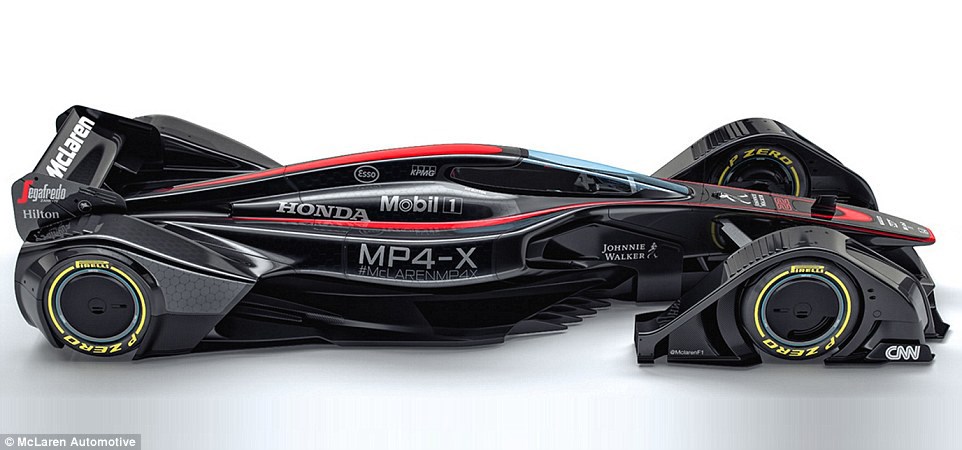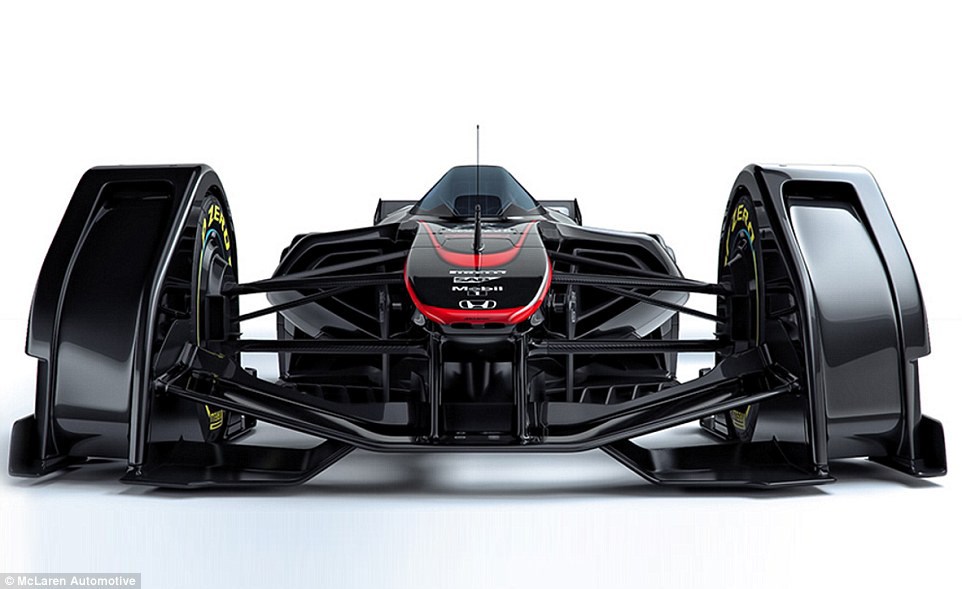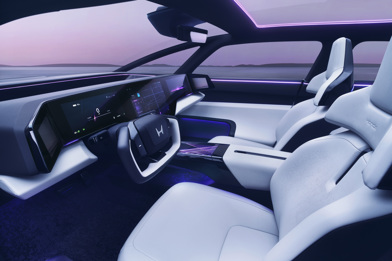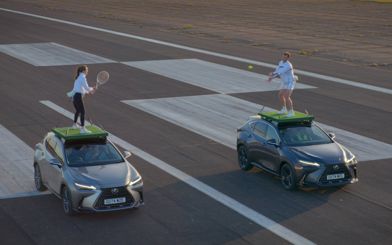Car would morph back into shape after a crash
Driving solely controlled by the brain, a morphing chassis and a cockpit that would look at home in a fighter jet: this is racing giant McLaren's vision for the future of motor-racing - the MP4-X Formula One concept.
Even with preparations for next season under way, McLaren's thoughts are already turning to years down the line with a new Batmobile-lookalike F1 car that utilises existing technology that could transform the sport when it reaches its full potential.
The MP4-X showcases some of the most advanced tech that McLaren's Applied Technologies division is working on and gives a glimpse of what life could be like on circuits around the world in the next generation of racing.

The design draws in current developments of the sport, such as the desire to provide protective canopies for drivers, while upgrading its core values of speed and excitement through development of almost every element to form a visually-stunning, technologically-advanced vehicle.
'With the futuristic McLaren MP4-X concept race car, we wanted to peer into the future and imagine the art of the possible,' John Allert, group brand director of McLaren said.
'We have combined a number of F1's key ingredients – speed, excitement and performance, with the sport's emerging narratives - such as enclosed cockpits to enhance driver safety, and hybrid power technologies.
'Formula 1 is the ultimate gladiatorial sport, and the future we envisage will be a high tech, high performance showcase that excites fans like no other sport.'
It certainly does that. In addition to the protective canopy, other features of the car include tyre sensors that could warn of dangerous blow-outs before they occur, a race suit that would be able to transmit live biological information to the team and solar cells to supplement on-board systems or be used as a boost.
McLaren say much of the MP4-X would far outstrip the current generation of Formula One vehicles with 11 key areas of development focused upon.
The MP4-X could also potentially be controlled by signals from the driver's brain, with having no physical controls at all a 'theoretical possibility' or using gestures or holographic instrument panels within the cockpit.
Earlier this year researchers showed how brainwaves could control planes with the help of brain-to-computer interface (BCI) software.
During a public presentation, teams used a high-performance electroencephalogram (EEG) cap to measure the brain waves of a 'pilot'. A bespoke software and algorithm then converted these brain signals into drone commands.
Tekever, a firm working on the project, said: 'Essentially, the electricity flowing through the pilot's brain acts as an input to the drone's control system, in order to perform, on the air, a mission with objectives previously defined by the research team.'
By thinking about which direction he wanted the drone to travel, the pilot was able to fly, turn and land the craft. McLaren's concept could employ a similar system.
In the wake of recent serious and fatal accidents in the sport, changing from the open-cockpit racing format has been considered in order to reduce the number of injuries and deaths.

McLaren driver Jenson Button recently said: 'I was one of many drivers who said, 'This is open-cockpit racing, it should stay as open-cockpit racing,' but I think we've had enough now. We've got to get a canopy on the car of some sort, because we can't have these sorts of accidents happening as much as they have over the last few years.
'It's not the 1970s any more, we should know better. Canopies probably are the way to go, but obviously that takes time.'
As far as McLaren are concerned, it seems the canopy is the favoured option for the future. Their concept could improve a driver's visibility in different conditions while letting spectators see inside the cars.
The concept also includes some features currently banned in Formula One, but those regulations could be revisited as technology develops.
Electrodes that turn the air around the cars winds into plasma - plasma flow control - would be one option to help achieve top speeds after corners while the car's alloys could be adaptive by featuring shape memory.
There would be good news for sponsors, too. Standard stickers would be replaced by a billboard that shows targeted adverts for specific viewers in a development that would see a car look unique to every viewer.
McLaren Marketing group head of digital and social media, Rob Bloom, says: 'Since when have the consumer demands of the fan in Lithuania and the fan in Lubbock, Texas been similar? This approach merely reflects the diversity that could become available in a maturing digital age.'
-Daily Mail




